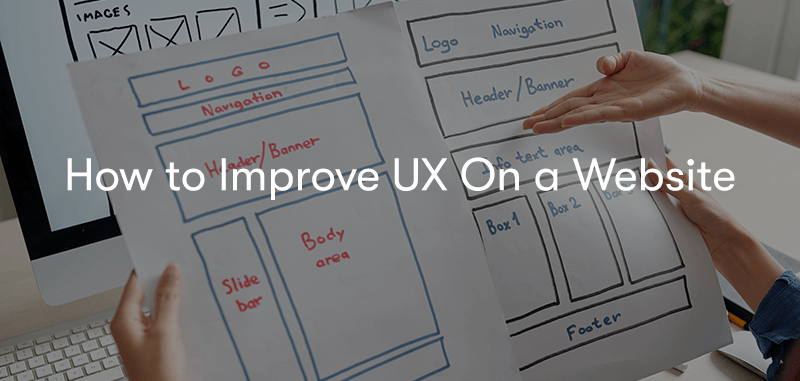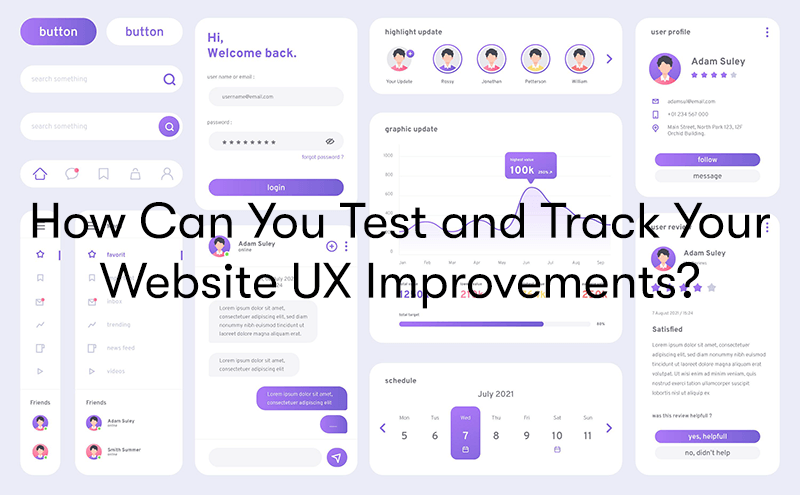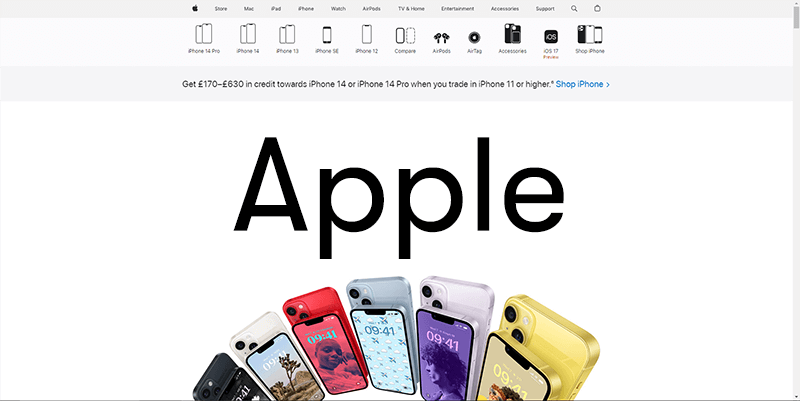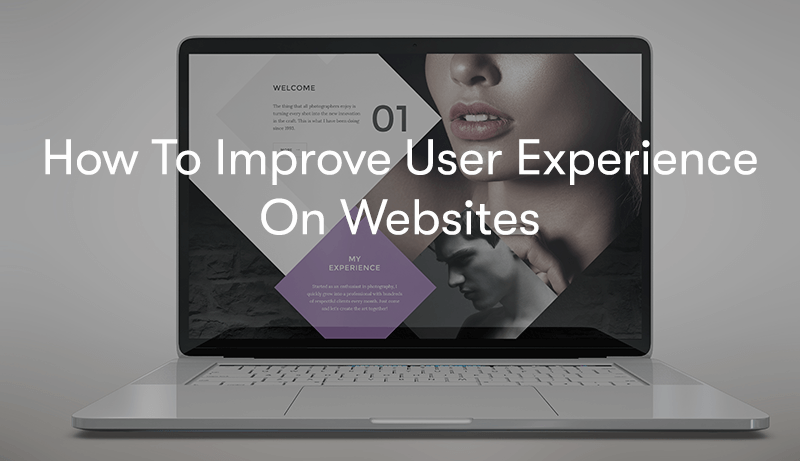How To Improve User Experience On Website
Welcome to our in-depth blog on improving your website's user experience (UX). In today's digital world, where user expectations are constantly evolving, creating a seamless and enjoyable online experience is paramount. Whether you're an e-commerce business, a content provider, or simply looking to enhance your online presence, this comprehensive resource will walk you through the strategies and techniques to boost UX.
From responsive design and intuitive navigation to performance optimisation and user testing, we'll explore the essential steps to create a website that engages, converts, and satisfies users, ultimately driving your online success. Let's dive in and unlock the secrets to exceptional UX.
How to Improve UX On a Website

Improving the UX of a website is essential for engaging visitors, keeping them on your site longer, and achieving your website's goals. Here's a comprehensive guide to help you improve the UX on your website:
User Research
- Understand your target audience, goals, and pain points through surveys, interviews, and analytics.
- Create user personas to represent different types of users and their needs.
Responsive Design
- Ensure your website is mobile-friendly and responsive to various screen sizes and devices.
- Test your website on different browsers and devices to ensure compatibility.
Clear Navigation
- Use a simple, organised navigation menu with clear labels.
- Implement a logical hierarchy through card sorting that makes it easy for users to find what they're looking for.
Fast Loading Times
- Optimise images, videos, and other media to reduce page load times.
- Use content delivery networks (CDNs) to improve users' loading speed worldwide.
Content Quality
- Provide high-quality, relevant, and well-structured content.
- Use headings, bullet points, and short paragraphs to improve readability.
Consistent Branding
- Maintain a consistent visual design, colour scheme, and typography throughout your site.
- Ensure your brand identity aligns with your target audience.
Minimise Clutter
- Avoid overcrowding pages with too much information or elements.
- Use whitespace to improve readability and separate content.
Clear Calls to Action (CTAs)
- Use compelling and action-oriented CTAs that guide users to take desired actions.
- Make CTAs visually distinct and strategically placed.
Search Functionality
- Implement a robust search feature with auto-suggestions and filters, especially for content-heavy websites.
Feedback Mechanisms
- Collect user feedback through surveys, feedback forms, or usability testing.
- Act on feedback to continuously improve the website.
Accessibility
- Ensure your website is accessible to people with disabilities by following WCAG (Web Content Accessibility Guidelines).
- Use descriptive alt text for images and provide keyboard navigation.
Performance Optimisation
- Regularly monitor and optimise website performance, including server response times and page speed.
- Compress files, leverage browser caching, and minimise HTTP requests.
Security
- Implement robust security measures to protect user data and ensure safe browsing.
- Use SSL certificates for secure connections (HTTPS).
Mobile Optimisation
- Prioritise mobile users by designing a mobile-first or responsive website.
- Test on various devices and browsers to ensure compatibility.
User Testing
- Conduct usability testing with real users to identify issues and areas for improvement.
- Use A/B testing to compare different designs or content variations.
Analytics
- Implement website analytics tools (e.g., Google Analytics) to track user behaviour, identify bottlenecks, and make data-driven improvements.
Loading Indicators
- Use loading indicators or progress bars to keep users informed during page transitions or data retrieval.
Error Handling
- Provide clear error messages and guidance when users encounter issues, such as form submission errors.
Content Updates
- Regularly update and maintain your website to keep content fresh and relevant.
- Clearly, document to instruct users with complex elements.
Remember that UX improvement is an ongoing effort. Regularly assess your website's performance and user feedback to make adjustments and ensure a positive user experience.
Why is it Important to Improve UX On a Website?

Improving the UX on a website is critically important for several reasons:
User Satisfaction
A positive UX ensures visitors to your website have a pleasant and enjoyable interaction. Satisfied users are more likely to stay longer, engage with your content, and return in the future.
Higher Conversion Rates
Websites with better UX tend to have higher conversion rates, whether the goal is to make a purchase, sign up for a newsletter, fill out a contact form, or take any other desired action. When users find a website easy to navigate and use, they're more likely to complete these actions.
Reduced Bounce Rates
Good UX design helps lower bounce rates, making users less likely to leave your website immediately after arriving. This can positively impact your search engine rankings and overall website traffic.
Competitive Advantage
In a competitive online landscape, a superior UX can set your website apart from others in your industry. It can be a key differentiator that attracts and retains customers.
Improved SEO
Google and other search engines consider UX signals like page speed, mobile-friendliness, and user engagement ranking factors. Enhancing UX can improve your website's visibility in search results.
Accessibility Compliance
An improved UX often goes hand-in-hand with accessibility improvements, ensuring that your website is usable by individuals with disabilities. This broadens your audience and helps you adhere to legal requirements in many regions.
Enhanced Brand Image
A well-designed and user-friendly website reflects positively on your brand. It conveys professionalism and trustworthiness, leading to increased credibility and customer trust.
Customer Retention
Existing customers are more likely to return to a website that offers a great experience. Keeping customers engaged and satisfied can build long-term relationships and encourage repeat business.
Reduced Support and Maintenance Costs
A website with good UX often experiences fewer user issues and complaints, leading to reduced customer support demands. It can also lead to lower maintenance costs in the long run.
Data-Driven Decision-Making
Improving UX involves analysing user behaviour and feedback. This data-driven approach lets you make informed decisions and prioritise improvements based on user needs and preferences.
Global Reach
A user-friendly website can cater to a global audience, breaking language and cultural barriers. This can expand your reach and potentially lead to international growth.
Positive Word of Mouth
Users who have a great experience on your website are more likely to recommend it to others. Positive word of mouth can drive organic traffic and new users.
In summary, improving the user experience on your website is vital for achieving your business objectives, enhancing user satisfaction, and staying competitive in the digital space. It directly impacts conversion rates, brand reputation, and overall online success.
How Can You Test and Track Your Website UX Improvements?

Testing and tracking website UX improvements are essential steps in enhancing user experience. Here are some methods and tools you can use to evaluate the impact of your UX changes:
Usability Testing:
- Conduct usability testing sessions with real users to gather feedback on the website's usability and user satisfaction.
- Observe how users interact with the site, where they encounter difficulties, and what changes might help.
- Usability testing can be done in-person or remotely and should involve diverse participants.
A/B Testing:
- Implement A/B tests to compare two versions of a web page (the original and a variant with UX improvements) to determine which performs better.
- A/B tests can be used to assess the impact of changes to design elements, calls to action, or layout.
- Use tools like Google Optimize, Optimizely, or VWO to set up and analyse A/B tests.
Heatmaps and Click Tracking:
- Use heatmap tools like Hotjar or Crazy Egg to visualise where users click, move their cursors, or scroll on your web pages.
- Heatmaps can reveal which elements are receiving the most attention and help you identify areas that need improvement.
User Surveys and Feedback Forms:
- Collect user feedback through surveys, on-page feedback forms, or post-interaction feedback pop-ups.
- Ask specific questions about their experience, such as ease of use, satisfaction, and areas they find challenging.
- Analyse the feedback to pinpoint common issues and areas for improvement.
Website Analytics:
- Utilise website analytics tools like Google Analytics to track user behaviour, traffic sources, and engagement metrics.
- Monitor key performance indicators (KPIs) like bounce rate, conversion rate, session duration, and exit pages.
- Compare data before and after UX improvements to assess their impact.
Conversion Tracking:
- Set up conversion tracking for specific actions on your website, such as form submissions, purchases, or downloads.
- Evaluate how UX changes influence conversion rates and the user journey leading to those conversions.
Performance Monitoring:
- Continuously monitor website performance, including page load times, server response times, and error rates.
- Ensure that UX improvements do not negatively impact website speed or reliability.
Accessibility Audits:
- Use automated accessibility testing tools like Axe, Wave, or Lighthouse (built into Google Chrome) to check for accessibility issues on your website.
- Address and fix any accessibility issues that may impact the user experience for individuals with disabilities.
Customer Support Feedback:
- Pay attention to customer support inquiries and feedback related to the website.
- Identify recurring issues or complaints and use this information to guide UX improvements.
Social Media Listening:
- Monitor social media channels and online forums for discussions and mentions related to your website.
- Keep an eye on user sentiment and comments regarding the user experience.
User Behaviour Analysis:
- Use tools like Mixpanel or Heap Analytics to gain insights into user behaviour, such as funnels, user flows, and event tracking.
- Analyse how users interact with your site and identify areas where they may drop off or encounter obstacles.
Competitor Benchmarking:
- Study your competitors' websites to gain insights into their UX design and user engagement strategies.
- Compare your site's performance and user experience to your competitors to identify areas where you can excel.
Regularly collect and analyse data from these sources to evaluate the effectiveness of your UX improvements. Adjust your strategies based on the findings to enhance the user experience on your website continually.
Examples of Website UX
There are millions of websites out there. I have picked two to clearly show the difference between good and bad website UX design.
Example of Poor Website UX

Arngren has won multiple awards for the worst website. In short, it breaks nearly every UX practice there is. Apart from load speed, that's pretty good.
Example of Good Website UX

Apple is worth over £2.8 trillion, so it's fair to say they have a massive UX budget compared to most organisations. Apple's website has great animations for users to enjoy whilst navigating their site easily.
Where Can You Learn More About UX Design?
Our BCS Foundation Certificate In User Experience training course is perfect for anyone who wants to increase their knowledge of User Experience. The BCS User Experience course will teach you the UX methodology, best practices, techniques, and a strategy for creating a successful user experience. The course will cover the following topics:
- Guiding Principles
- User Research
- Illustrating The Context Of Use
- Measuring Usability
- Information Architecture
- Interaction Design
- Visual Design
- User Interface Prototyping
- Usability Evaluation
Click the button below to find out more.

Final Notes On How To Improve User Experience On Your Website
In today's digital landscape, enhancing website UX is paramount. From understanding user needs to regularly testing and refining site elements, UX plays a pivotal role in user satisfaction, engagement, and conversion rates. Key strategies like usability testing, A/B testing, and analytics tracking offer invaluable insights into user interactions, helping pinpoint improvement areas.
Tools such as Google Analytics, Hotjar, and user surveys further help in optimising the user journey. As this discussion underscores, an ongoing commitment to monitoring, testing, and refining your website's UX is essential in today's competitive online environment, ensuring a seamless and enjoyable user experience.


